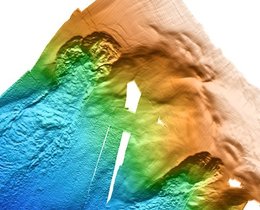SD3 - Rapid sediment mobilization
A.J. Kopf, K. Huhn, C. Spiegel
T. Feseker, S. Kasemann, M. Kölling, T. Mörz, M. Strasser
Among the wealth of sedimentary processes, the rapid, highly dynamic end of the spectrum includes two phenomena of particular importance for researchers because of their societal relevance and, oftentimes, because of their catastrophic nature and consequences: Submarine slope failure and mud volcanism. Both processes are known to be potentially associated with lateral fluid flow (Sultan et al. 2004), fluid upward migration, weak clay-rich strata (Harders et al. 2010; Locat and Lee, 2002), rapid sedimentation, seismic triggering events (Strasser et al. 2011), and tectonic forcing.
In this project we want to apply a multidisciplinary approach, initially combining geophysical and sedimentological data and later using primarily geotechnical and numerical experiments to identify and quantify the impacts of steady, seasonal and episodic forcing mechanisms. Key target research areas are the Mediterranean Sea (Ligurian Margin; Gela Basin, Cretan Margin) and ocean margins off Uruguay, Norway, and Japan employing MARUM technologies, e.g. MeBo, ROV, and the proposed MeBo-CORK technology.
T. Feseker, S. Kasemann, M. Kölling, T. Mörz, M. Strasser
Among the wealth of sedimentary processes, the rapid, highly dynamic end of the spectrum includes two phenomena of particular importance for researchers because of their societal relevance and, oftentimes, because of their catastrophic nature and consequences: Submarine slope failure and mud volcanism. Both processes are known to be potentially associated with lateral fluid flow (Sultan et al. 2004), fluid upward migration, weak clay-rich strata (Harders et al. 2010; Locat and Lee, 2002), rapid sedimentation, seismic triggering events (Strasser et al. 2011), and tectonic forcing.
In this project we want to apply a multidisciplinary approach, initially combining geophysical and sedimentological data and later using primarily geotechnical and numerical experiments to identify and quantify the impacts of steady, seasonal and episodic forcing mechanisms. Key target research areas are the Mediterranean Sea (Ligurian Margin; Gela Basin, Cretan Margin) and ocean margins off Uruguay, Norway, and Japan employing MARUM technologies, e.g. MeBo, ROV, and the proposed MeBo-CORK technology.



